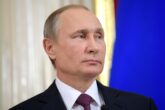October 11, 2021
Key takeaways from the inaugural EU-U.S. Trade and Technology Council meeting
On September 29, the European Union and United States hosted the inaugural Trade and Technology Council (TTC) meeting in Pittsburgh, Pennsylvania. As an official stated in advance of the meeting, analysts should not expect fireworks from the inaugural meeting. While there were no fireworks and few tactical policy recommendations, the resulting joint statement outlined the United States and European Union’s priorities moving forward in trade and technology. Several issues topped the agenda in the inaugural meeting. How these issues are addressed in the upcoming working group meetings will outline the path forward for transatlantic cooperation across a variety of areas.
The TTC joint statement identifies semiconductors as a top priority for the transatlantic allies. Shortages across the global economy and geopolitical concerns about manufacturing concentration in Taiwan, who holds 92% of leading-edge capacity, have necessitated improving semiconductor supply chain resiliency in the United States and Europe. To this end, the U.S. Congress passed the CHIPS Act in January to elevate the priority of semiconductors, and recently the U.S. Senate passed a bill appropriating $52 billion to improve semiconductor supply chain resiliency. Similarly, the EU Commission President Ursula von der Leyen outlined the EU’s goals for semiconductor supply chain resiliency in her State of the Union address.
As the United States builds AI regulations, the United States should strive to align its AI Risk Management Framework with the European Union’s Artificial Intelligence Act.
Although von der Leyen’s speech outlined the importance of semiconductor production, Europe’s semiconductor strategy remains unclear. The absence of a clear strategy and prioritization from Europe threatens to hobble transatlantic cooperation in this domain. Without a clear vision of Europe’s priorities or goals, the partners are unable to determine complementarity in their strategies or how to chart a course forward for cooperation. Moving forward, Europe must define their overarching goals in this space. Only then can the TTC’s supply chain resiliency working group coordinate the transatlantic partner’s efforts and subsidies to create the most impact, while avoiding a subsidy race between the United States and Europe.
Developing and implementing trustworthy artificial intelligence was another focus area in the joint statement. The United States and European Union acknowledged the importance of human-centered AI and recognized each other’s regulatory regimes. As the United States builds AI regulations, the United States should strive to align its AI Risk Management Framework with the European Union’s Artificial Intelligence Act. Recognizing their respective regulatory frameworks in the joint statement is a good first step toward more aligned regulations on artificial intelligence, which are critical to counter authoritarian uses of artificial intelligence.
Read the full article from Encompass Europe.
More from CNAS
-
The Eurasian Century: Hot Wars, Cold Wars, and the Making of the Modern World with Hal Brands
For more than 100 years, the continent of Eurasia has played a central role in global geopolitics. In the 20th century, numerous authoritarian powers from Germany under Kaiser...
By Andrea Kendall-Taylor, Jim Townsend & Hal Brands
-
Trump Wants a Nuclear Deal. Can He Be the Ultimate Negotiator?
Should Trump negotiate with Russia’s Putin, and what terms should he pursue if US and global security is to be enhanced?...
By Jon B. Wolfsthal
-
Trump Turning Washington Crash into ‘Bar Room Talk’ Will Turn People Away | Jim Townsend
Trump's unchecked claims that the DC crash was caused by diversity quotas should "turn people away" from him, says Jim Townsend, an adjunct senior fellow in the CNAS Transatla...
By Jim Townsend
-
Putin’s Fight Won’t End With Ukraine
In an essay for Foreign Affairs, titled “Putin’s Point of No Return,” Andrea Kendall-Taylor, senior fellow and director of the Transatlantic Security Program at the Center for...
By Andrea Kendall-Taylor




